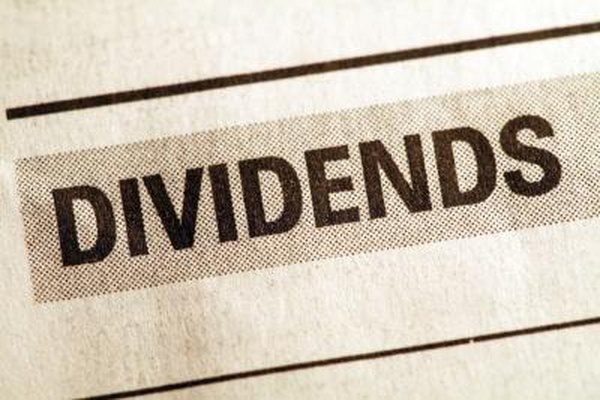What Is the Tax Rate on a Preferred Share Dividend?
Preferred dividends may be taxed at ordinary or long-term capital gains rates.
Jupiterimages/Photos.com/Getty Images
If your stock portfolio includes preferred shares, they probably pay out dividends more frequently than the shares of common stock you hold. Dividends on preferred shares are generally taxable to you at the same tax rates that apply to most other types of income you receive. But if the preferred shares meet certain criteria, you may be able to use lower tax rates when figuring out how much you'll owe the Internal Revenue Service on those dividends.
Preferred vs. Common
All shareholders, regardless of whether they hold common or preferred shares, have ownership interests in the issuing corporations. Preferred shareholders receive priority over common shareholders when it comes to the payment of dividends. In other words, if the corporation reports earnings, preferred shareholders receive their dividend payments before common shareholders. The goal of common stockholders, however, is for their shares to increase in value when the company is profitable. Preferred share prices aren't as volatile.
Ordinary Dividend Rates
All dividend payments a corporation makes from its earnings are treated as ordinary income for tax purposes. This means that you combine preferred dividends with most of the other income reported on your return, like business profits and employment wages, to arrive at your taxable income. The tax brackets for your filing status dictate which rate of tax is used on specific portions of your income. For example, if you file as head of household instead of single, a larger portion of your income is taxed at the initial 10 percent bracket.
Qualified Dividend Rates
Certain preferred dividends are treated as “qualified dividends” – which means they're taxed at the lower long-term capital gains rates. Dividends are qualified if they're paid by an U.S. corporation or a qualified foreign corporation; the corporation isn't ineligible to make qualified dividend payments, like a tax-exempt corporation, for example; and you can satisfy the holding period requirements. With qualified dividends, the rate of tax you'll pay may be zero percent, 15 percent or 20 percent. The applicable rate depends on the highest tax bracket you're subject to during the year. If the highest bracket is 10 percent or 15 percent, you don't owe any tax on the preferred dividends. But if you're in the 25 percent, 28 percent, 33 percent or 35 percent bracket, a 15 percent tax is used for the dividends. Taxpayers in the highest tax bracket of 39.6 percent, however, pay a 20 percent tax on qualified preferred dividends.
Preferred Stock Holding Period
To satisfy the holding period requirement for a dividend payment that is due for a period in excess of 366 days, you must own the preferred shares for more than 90 days during the 181-day period that commences 90 days prior to the ex-dividend date -- the day after the last day a shareholder must own the preferred shares to be eligible for the dividend payment. If the payment relates to a period that's less than 367 days, you only need to own the shares for more than 60 days during the 121-day period that begins 60 days before the ex-dividend date.
References
Writer Bio
Michael Marz has worked in the financial sector since 2002, specializing in wealth and estate planning. After spending six years working for a large investment bank and an accounting firm, Marz is now self-employed as a consultant, focusing on complex estate and gift tax compliance and planning.

